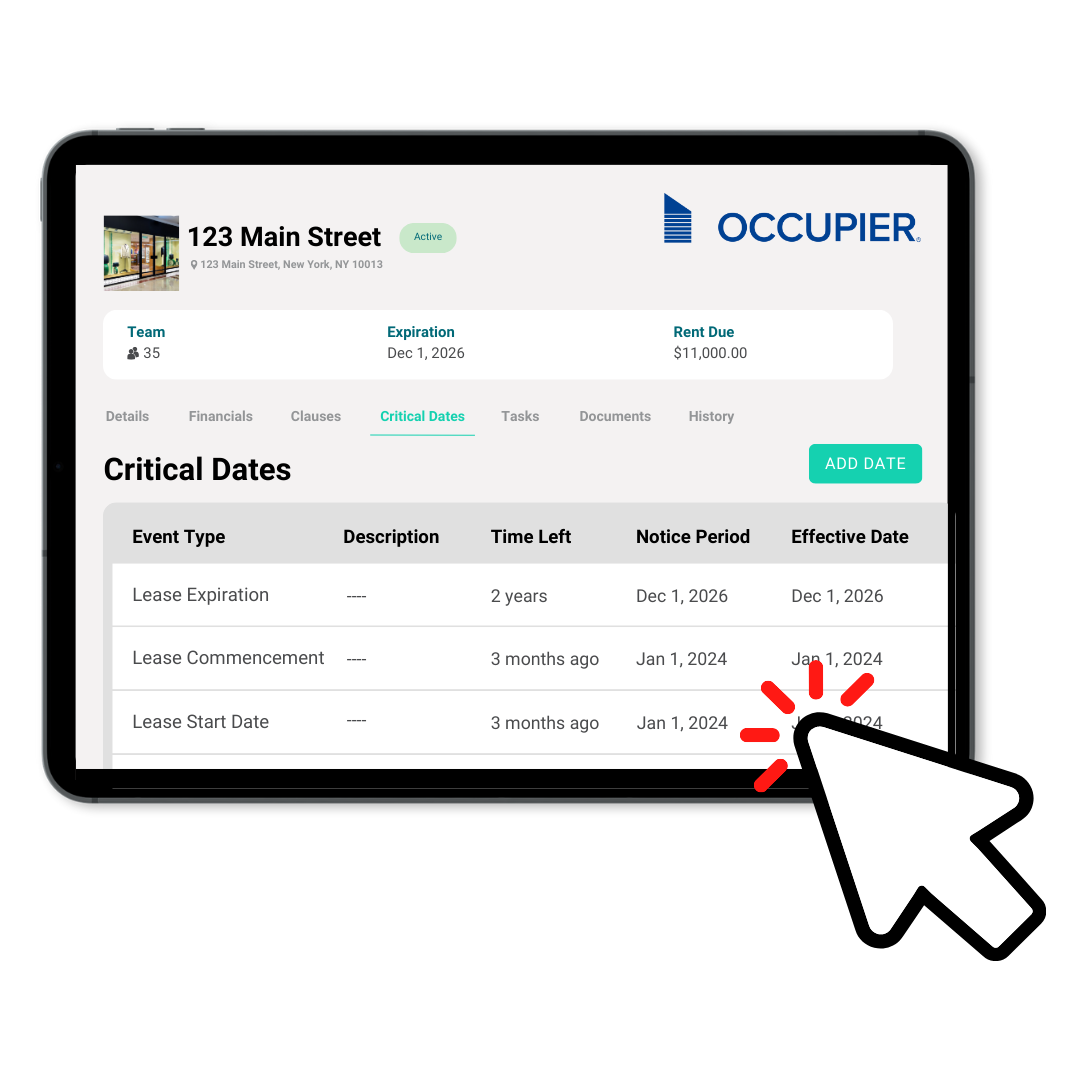4 Types of Expansion Clauses in Commercial Real Estate
Last Updated on October 30, 2024 by Morgan Beard
In commercial real estate, expansion clauses can be a valuable asset for tenants looking to grow within a property or portfolio. These clauses provide a level of security, flexibility, and foresight, ensuring that a business can scale without relocating or undergoing costly property searches. From the right of first offer to the must-take clause, each type of expansion clause offers unique benefits—and potential challenges—that can impact a tenant’s ability to expand within their current space. In this post, we’ll break down four common types of expansion clauses:
What are Expansion Clauses?
Expansion clauses are negotiable agreements in commercial real estate leases that guarantee or give preferential rights to the tenant to expand within the current building or portfolio they are leasing from.
1. Right of First Offer (ROFO)
A right of first offer is an expansion clause that guarantees the current tenant the first chance to lease an available space in the building when it becomes available before the landlord can market or accept any offers on that space from third parties, or other tenants.
However, there is no binding agreement and the landlord is not required to lease the available space to the tenant. If the landlord and tenant are unable to agree to terms, the landlord is then able to market and lease the property to a third party.
Pros: If the tenant wants to expand within the same building, they are prioritized over third parties, which is advantageous in a competitive market where spaces are leased quickly.
Cons: The tenant is not guaranteed the lease because the landlord can set adverse terms such as asking for a longer lease term or asking for higher market rent. Thus, the tenant would have to negotiate the terms or decline on the space.
How to execute your expansion right: The landlord is required to notify the tenant with an offer to the available space. The tenant has a specified time frame in which to accept or decline the offer, typically between 5 to 10 days.
2. Right of First Refusal (ROFR)
A right of first refusal is an expansion clause that gives the current tenant the right to match a third party offer on the available space. The landlord is allowed to market an available expansion space to third parties but must also give full transparency to the current tenant on the terms offered by other parties for the tenant to decide to expand based on those terms or decline. The tenant’s right to expand becomes revoked as soon as they initially decline.
Pros: The tenant is guaranteed the chance to expand and can get the space at market rates or better since the landlord is not setting the terms.
Cons: The tenant doesn’t have a direct say in the negotiation of the lease terms. They must either choose to expand given the lease terms from the third party or forgo their right to expand to the third party.
How to execute your expansion right: When the landlord offers the tenant the terms that they have agreed upon with the third party, the tenant must accept the terms or decline within a certain time frame. This time frame is also typically between 5 to 10 days, but may or may not be specified in the lease. If the tenant chooses to accept and expand, the landlord may require an increased security deposit and payment for the first month’s rent- common requirements for leasing any new space.
3. Must Take Clause
A must take clause is an expansion clause where the tenant agrees to lease an entire space prior to the actual time they will need it. The tenant only pays rent for the part of the space they need during a pre-negotiated period, also called the “ramp-up” period. After the ramp-up period the tenant begins to pay for the entire space.
A must take clause is a great opportunity for fast-growing companies to reserve space that they currently don’t need but will need in the future.
Pros: The tenant saves on “free rent” during the “ramp-up” period and secures space for their growth needs early on, not needing to go through new searches or subleasing smaller, outgrown spaces in the future.
Cons: By contract, the tenant is eventually obligated to pay rent on the entire space, even if they only use a part of it. If the company does not grow as fast as anticipated, the tenant will end up paying rent on space they aren’t using.
How to execute your expansion right: After the stated time frame, the tenant begins to pay the increased rate for the additional space.
4. Option to Expand
The option to expand is an expansion clause that allows the tenant to reserve a space for future use, at no additional cost, within a defined time period. If the tenant fails to make use of the space in that time period, the landlord has the right to market and lease the space to a third party.
Pros: The tenant is permitted to reserve the space for future use at no extra charges.
Cons: If the tenant doesn’t use the space within a specified time frame, they lose their preferential rights and the landlord is allowed to lease to another prospective tenant.
How to execute your expansion right: The tenant must deliver a written notice to the landlord.
Because expansion clauses are advantageous to the tenants at the expense of the landlords, landlords may be hesitant to include them in leases. And whether a landlord decides to include an expansion clause can be determined by the tenant’s negotiating leverage. Thus, if you plan to include any type of expansion clause in your commercial lease, it is important to have a professional tenant rep with strong negotiation skills.

Product Tour
Take a self-guided tour and see how the fastest-growing commercial tenants leverage Occupier for lease management & lease accounting.
